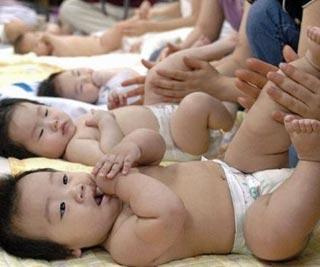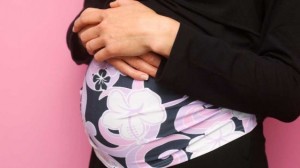The following are excerpts of debates on Singapore’s fertility rate, childcare facilities, adoption leave, maintenance payment, and foreign domestic workers, which took place during the April 9 and May 14 sittings of Parliament.
FERTILITY
Denise Phua asked about (a) the impact of the Total Fertility Rate (TFR) on the future of Singapore if it continues to remain low; (b) the level of awareness among Singaporeans of the impact of low TFR and how this level of awareness may be raised; (c) the measures is the Government adopting to mitigate the negative effects and challenges of the low TFR; and (d) the Government’s efforts to engage Singaporeans on this significant issue.
Teo Chee Hean: Singapore’s Total Fertility Rate (TFR) in 2011 was 1.2, and our TFR has been below the replacement level of 2.1 since 1976. This means that as a society, we are having fewer children than needed to replace ourselves. At current birth rates and without immigration, our citizen population is projected to start shrinking by around 2025.

With fewer Singaporeans being born, our citizen population will also age rapidly. The median age of our citizen population today is 39 and it will rise steadily to 47 years in 2030. By 2030, the number of elderly citizens, that is, those aged 65 and above, will triple to about 900,000, but they will be supported by a smaller base of working-age citizens aged between 20-64 years old.
By 2030, there will only be 2.1 working-age citizens to each elderly citizen, as compared to 6.3 today; so one-third. This will place greater pressure on the citizen population in the working ages, not just in the household, but in society as well as economically.
These challenges, while serious, are not insurmountable. The Government has also invested heavily in education, healthcare and housing to ensure that Singapore remains a good place to get married and raise children. We have been making significant investments in supporting marriage and parenthood; in monetary terms, from $500 million per year in 2001 to $1.6 billion a year since 2008.
The Marriage and Parenthood package comprises a broad range of measures, such as the Baby Bonus, maternity and childcare leave, infant care and child care subsidies as well as tax benefits for parents. And we will continue to fine-tune our policies and measures to support and encourage Singaporeans in this regard. Apart from policy incentives, we will also need to foster a social climate that supports family life.
Beyond supporting marriage and parenthood, the Government has stepped up efforts to raise productivity and encourage more Singaporeans to enter the workforce, to expand the potential of our small local workforce. We are also putting in place measures that ensure that older Singaporeans can look forward to an active, fulfilling and secure future.
This year, the National Population and Talent Division in the Prime Minister’s Office has commenced engaging Singaporeans on population issues, including our low birth rates, and how we can overcome these demographic challenges together.
We will share relevant information about our population challenges, like the Occasional Paper on Citizen Population Scenarios released by NPTD last month, to facilitate discussions, such as those which took place at the Institute of Policy Studies seminar just a couple of weeks ago.
We will take into account the concerns and aspirations of Singaporeans in the White Paper on Population to be released by the end of the year. Through this process, we hope to engage Singaporeans and develop a shared understanding of our strategies to build a sustainable population that secures Singapore’s future.
Denise Phua: Since financial incentives do not seem to work that well and our TFR had remained fairly low, I would like to find out a little more about promoting this social climate that Deputy Prime Minister is talking about. Sharing with the population the merits of having children and the joy of family and children: is that part of the strategy that can go beyond just the current package of incentives? What currently are your thoughts on this?
Teo Chee Hean: Well, certainly encouraging people to appreciate family, marriage, having children, having a good family life and the joys of family life: I think those are the things which you can see the Government has been trying to do. You will see from time to time advertisements, nice advertisements and so forth. You will see in the community all kinds of family life activities to encourage family bonding, to enjoy family life.
But, this is not one of those things which the Government is necessarily the best at doing. So we would hope that many more members in the community, NGOs and community groups, will also step up and encourage the joys of family-hood and parenthood.
Lee Bee Wah: I would like to ask the Deputy Prime Minister whether he would consider giving more help to those families with, perhaps, three children or more. Some of my residents propose giving more help in childcare for those with three children or more, or during Primary 1 registration.
Teo Chee Hean: Many of our schemes for encouraging parenthood are tied to individual children. So if you do have more children, you will have more Baby Bonus, you will have more Child Development Grants and so forth. So they are tied in that way already.
Eugene Tan: I would like to ask the Deputy Prime Minister this: you spoke of a social climate that is conducive for marriage and parenthood. What about a social climate that will enable Singaporeans to take a balanced view towards immigration?
Teo Chee Hean : Yes, I think that too. My own sense is that Singaporeans do understand that a certain amount of immigration is good for us, and that refers to people who become citizens and permanent residents. I believe that Singaporeans also do understand that we do need a foreign workforce in Singapore of some numbers who are not here permanently but are transient because that helps to increase our workforce and contribute to improving our workforce dependency ratios.
The advantage of such a transient workforce, of course, is that they are here when they are economically active and contributing, but they do not place additional burden on the society and social needs either when they are very young – say in school – or when they have reached retirement age.
So, a population which is complemented by a certain amount of immigration and also complemented by a foreign workforce of some numbers, I think most Singaporeans would probably accept that. The issue then is to discuss what those numbers are and what those mean for us in terms of growth, in terms of immigration, in terms of infrastructure.
Denise Phua: I wish to ask if Government can consider adopting a more effective matrix or toolkit of communications because I am not sure that most Singaporeans are actually aware or much less alarmed about these, to me, very concerning trends of very low TFR, very rapidly ageing population, and also the attitudes towards the foreigners we have to bring in to help supplement the shortage.
I do not think there is currently a very effective way of communicating. Much of our communications are very cerebral, full of data, numbers and graphs. And I believe there is a better and more effective way to do this.
Teo Chee Hean: I certainly would agree with Ms Denise Phua that we will try and communicate better and we hope, again, that we will have people like Ms Phua and others to help us do the communication. I think it is better to think in terms of if we are going to have 900,000 people over the age of 65 compared to the 340,000 that we have today, a three-fold increase, then we really need to ask ourselves who is going to help, say, in the home.
Some will want to have domestic help. Who are going to staff up all the healthcare and hospital facilities that we would need? Who are going to staff up, say, the nursing homes and community step-down facilities that we would need? We may not have enough Singaporeans to do that. Therefore, even just in these sectors alone, we are going to need many more people in order to make sure that our older population will be properly looked after.
So just in these areas alone, I think there will be considerable needs for foreign manpower. So I think when we put the question across in this way and say, “All right, who is going to look after you?” I think that is a question which people will then begin to think, well, okay, maybe we do need some foreign nurses, foreign healthcare assistants, and so forth. Or who is going to build the homes that you want? Or who is going to build the MRT system that we all want? Is it going to be done all by Singaporeans? I think the answer is “no”. And so then we will need some of these foreign manpower.
So I think we need to try and communicate a little better. I agree with you.
CHILDCARE
Gan Thiam Poh asked if the Ministry for Community Development, Youth and Sports (MCYS) would consider providing and running childcare centres at affordable cost to Singaporeans with heavy subsidy from the Government so as to standardise service levels and ensure affordability to encourage procreation.
Chan Chun Sing: Today, childcare services are provided by more than 900 centres, operated by private operators and Voluntary Welfare Organisations (VWOs). This variety allows centres to offer a range of programmes to cater to the diverse needs of families.
All childcare centres have to meet MCYS’ licensing standards in order to operate. Teachers’ academic qualifications and professional training standards are also regulated. To raise the quality of programmes, MOE has introduced the Singapore Pre-school Accreditation Framework (SPARK) for kindergarten level programmes and MCYS launched the Early Years Development Framework last year to guide programmes for younger children age 0-3.
To ensure that quality childcare services remain affordable, we support parents through the universal childcare subsidy and the Baby Bonus scheme. A total of $209 million was disbursed in universal childcare subsidies in FY 2011. Lower-income families can receive additional help through the ComCare child care and kindergarten assistance schemes.
Yee Jenn Jong asked (a) how many void deck childcare centres are currently leased to not-for-profit organisations; (b) what is the average rent per square foot and child care fees for these centres; (c) how many new void deck childcare facilities are expected to be made available for lease in the next two years; and (d) what percentage of these will be for not-for-profit organisations.
Chan Chun Sing : There are currently 317 child care centres operated by non-profit organisations, of which 290 are sited in HDB void deck premises.
The Government recognizes the important role that non-profit organisations play in providing affordable and accessible child care services, particularly for children from lower income or disadvantaged backgrounds. We support these operators in different ways, including making available HDB void deck space, and providing grants for the set-up, furnishing and cyclical maintenance of centres in HDB void decks. The Government also charges a lower rental rate, or about $2 to $4 per square metre, on HDB void deck space for non-profit child care centres.
The current median fee for full-day child care provided by a non-profit operator is $615, compared to the commercial operators’ median fee of $885. To help parents with affordability, the Government also provides various forms of financial support, including a universal subsidy of up to $300 per month for all Singapore citizen children and funds under the Baby Bonus scheme which can be used to offset child care fees. Lower income families can obtain additional financial assistance under ComCare.
We will do more to encourage the development of child care centres by making available more information to operators – both non-profit as well as commercial providers. We are in the midst of compiling a list of upcoming HDB void deck sites earmarked for the set-up of child centres. We will make this list available to providers when it is ready, and also periodically update the list as more sites become available.
ADOPTION LEAVE
Fatimah Lateef asked if MCYS would consider increasing the Government-Paid Adoption Leave from four weeks to 16 weeks for mothers who adopt babies below 12 months of age, as like maternity leave given to mothers who have their own babies.
Chan Chun Sing : Adoption leave was introduced in 2004 to provide time for parents to bond with their adopted child. It is not a mandatory provision. Employers who voluntarily grant adoption leave to their employees can claim reimbursement of four weeks’ salary from the Government. Employers are not precluded from granting a longer period of adoption leave, as long as there is mutual agreement between both parties.
The maternity leave prescribed under the Child Development and Co-savings Act, on the other hand, is part of overall efforts to incentivise more births. It provides for 16 weeks of maternity leave for citizen births to married couples. The 16-week maternity leave allows a mother to bond with the child, as well as physically recuperate from childbirth before returning to work. The Government reimburses the employer for 8 to 16 weeks of the leave, depending on the birth order of the child.
As the objectives of adoption and maternity leave are different, it is not necessary to extend adoption leave to 16 weeks. Nevertheless, the Government will continue to encourage employers to support adoption leave applications by their employees, as part of family friendly practices.
Adoptive parents can also tap on the six days of statutory paid childcare leave (for parents with a Singaporean child below seven years), as well as six days of statutory unpaid infant care leave (for parents with a Singaporean child under the age of two).
MAINTENANCE PAYMENT
Fatimah Lateef asked about the effectiveness of enhanced enforcement measures against defaulters of maintenance payments since the Women’s Charter (Amendment) Act 2011.
Chan Chun Sing: With the Women’s Charter amendments in 2011, additional sanctions and penalties can be taken against maintenance defaulters in addition to the existing penalties of a fine, a garnishee order and imprisonment. The new provisions include making orders for defaulters to set up banker’s guarantee against future defaults, attend financial counselling and/or perform community service.
The Courts can also direct the Central Provident Fund (CPF) Board to disclose the employment information of defaulters to facilitate the Attachment of Earnings Orders. Maintenance recipients can report maintenance debts to a designated credit bureau and divorcees who remarry are required to declare their maintenance obligations.
Since the implementation of the measures last year, the Courts have made 9 orders to defaulters to furnish a banker’s guarantee, 10 orders for financial counselling and 2 orders for community service. The number of Attachment of Earnings Orders has increased by about 12% over a year, possibly facilitated by the disclosure of employment details from the CPF Board.
More than 40% of the 130 maintenance debts reported to the designated Credit Bureau have been paid up. As for the requirement for divorcees to declare maintenance debts at remarriage, 412 have declared that they have maintenance orders, and 44 declared they have maintenance debts upon filing for marriage.
Overall, the number of applications for maintenance enforcement made to the Subordinate Courts has declined from 3,279 in 2010 to 2,979 in 2011. However, as the new measures were introduced recently, it is too early to determine their full impact. We will continue to monitor the progress.
FOREIGN DOMESTIC WORKERS
Chia Shi-Lu asked about the 6-Monthly Medical Examination (6ME) to screen for infectious diseases and pregnancies in foreign domestic workers (FDWs). In each of the last 2 years, (a) what is the percentage of FDWs who have been found to have a notifiable infectious disease or critical health issues; and (b) what is the percentage who have been found to be pregnant?
Tharman Shanmugaratnam: A medical examination framework for Foreign Domestic Workers (FDWs) is in place to safeguard the public interest, and the health of the FDWs themselves. FDWs first have to undergo and pass a medical examination within fourteen days after arriving in Singapore, before they are issued with their work permits. After they begin working in Singapore, they are also required to go for 6-Monthly Medical Examinations (6MEs).
This framework helps to ensure that FDWs are free from infectious diseases that pose a risk to public health in Singapore. Such diseases might harm the FDWs or the people they come into contact with. This is especially important as FDWs live and work in close proximity to employers and their family members, including children and the elderly.
A pregnancy test is also required to curtail problems which may arise if female foreign workers become pregnant and give birth in Singapore. Given that the period of gestation is 9 months, requiring a test only annually risks the possibility of some pregnancies being carried to full term without being detected.
The proportion of FDWs who have been found with such diseases or pregnant through the 6ME has not been high, averaging about 0.28% of the FDW population each year, over the last 2 years. The 6ME remains relevant nonetheless as the repercussions to affected households can be significant. The government will continue to monitor these figures to safeguard the health and well-being of FDWs, the members of the households they work in, and the public.
Read the full transcripts here and here.












